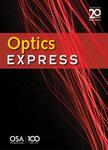版权所有:内蒙古大学图书馆 技术提供:维普资讯• 智图
内蒙古自治区呼和浩特市赛罕区大学西街235号 邮编: 010021

作者机构:Univ Namur Solid State Phys Lab Res Ctr Phys Matter & Radiat PMR B-5000 Namur Belgium
出 版 物:《OPTICS EXPRESS》 (Opt. Express)
年 卷 期:2013年第21卷第13期
页 面:A616-A630页
核心收录:
学科分类:070207[理学-光学] 07[理学] 08[工学] 0803[工学-光学工程] 0702[理学-物理学]
基 金:Cleanoptic project (Development of super-hydrophobic anti-reflective coatings for solar glass panels / Convention) of the Greenomat program of the Walloon Region (Belgium) FP7 EU-project PhotoNVoltaics (Nanophotonics for ultra-thin crystalline silicon photovoltaics) F.R.S.-FNRS [2.4617.07]
主 题:Absorption spectroscopy Computation methods Numerical simulation Power spectral density Solar cell efficiency Solar cells
摘 要:Because of the temporal incoherence of sunlight, solar cells efficiency should depend on the degree of coherence of the incident light. However, numerical computation methods, which are used to optimize these devices, fundamentally consider fully coherent light. Hereafter, we show that the incoherent efficiency of solar cells can be easily analytically calculated. The incoherent efficiency is simply derived from the coherent one thanks to a convolution product with a function characterizing the incoherent light. Our approach is neither heuristic nor empiric but is deduced from first-principle, i.e. Maxwell s equations. Usually, in order to reproduce the incoherent behavior, statistical methods requiring a high number of numerical simulations are used. With our method, such approaches are not required. Our results are compared with those from previous works and good agreement is found. (C) 2013 Optical Society of America